I thought I'd share a recent project I have been working on. I had seen information on creating batik pieces without using melted wax and fabric dye. Instead you create a wheat flour paste that acts as a resist. You can find instructions here. The inspiration for my design was Paul Klee's Cat and Bird since it uses simple lines. 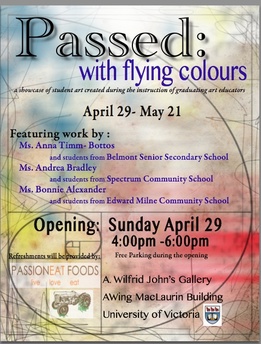 This Sunday between 4-6pm will be the opening night of the UVic Art Ed grad show Passed: with flying colours. The show will be hung at the A. Wilfrid Johns gallery in the A wing of the MacLaurin building at UVic. Come by to see some amazing artworks by graduating art education teachers and their students - including a piece by yours truly!
In the first blog about AESA's drawing workshop I discussed blind contour drawing. In this entry we'll be looking at ways to better understand the human body and how it moves. During the workshop the participants explored gesture drawing. A gesture drawing is work of art that is done rapidly. In terms of figure drawing, it means that the artist is concerned with capturing the essence of the pose. During the workshop participants drew a series of poses in a short amount of time, ranging from as little as 30 seconds to as long as 2 minutes. Creating gesture drawings allow an artist to capture poses that cannot be held by a model long enough for a detailed study. As well, this practice reinforces the importance of movement and action which can be overlooked during a longer drawing session. Below are examples of gesture drawings done during the workshop. The primary purpose of gesture drawing is to help artists understand how the human body moves. Gesture drawings allow you to focus on the effects of twisting on the body, the exertions of muscles, and the natural range of motion in the joints. By making gesture drawing a regular warm up exercise, your students will develop an instinctive understanding of human body proportions which will help them when they go to create more elaborate drawings. Try This Trick Having students mimic a model's pose for a few minutes before drawing also helps them to physically understand how the model's body is in tension. 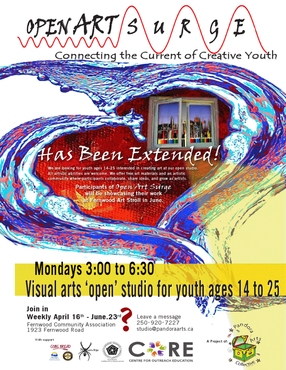 I have been volunteering with Open Art Surge, and the program been extended until June. The studio is open every Monday from 3:00-6:30 starting April 16 at the Fernwood Community Association (1923 Fernwood Road).
We are looking for youth ages 14-25 who are interested in creating art, and all artistic abilities are welcome. Every week participants will be provided with studio materials and a supportive environment to explore personal expressive imagery and join in building a creative community. Participants of Open Art Surge will also be showcasing their work at the Fernwood Art Stroll in June. This is a great opportunity for emerging artists to professionally display their works. For more information you can email us at [email protected] This week the Art Gallery of Ontario became the first Canadian museum to join the Google Art Project.
If you haven't explored it yet, this online project allows you to take a 360-degree virtual tour of museums and their artworks. The Google Art Project was launched last year with images from 17 international museums including London’s Tate Gallery and the Uffizi in Florence. For students, it means that they can explore high definition images of art that they normally would never be able to see. Click here to explore the AGO's artworks on the Google Art Project As promised here is a more detailed blog on some of the activities that were done during AESA's Beginners Drawing Workshop. The workshop began with an exploration of blind contour drawing. Blind contour is a method of drawing that involves drawing the contour of your subject while not looking at your paper. For the workshop each participant found a partner and had 5 minutes to draw their partner's face. The key to blind contour drawing is to draw one continous line in a slow and steady manner without lifting your pencil from the paper. While the drawings produced may seem more akin to scribbles, blind contour drawing does help students to draw more realistically, since it trains students to focus on all the details of their subject. I have also found that blind contour drawings are full of character, can be a good classroom icebreaker, and can ease students' anxiety of not being able to draw realistically.
Below are a few examples of blind contour drawings - including the one I did at the AESA workshop. |
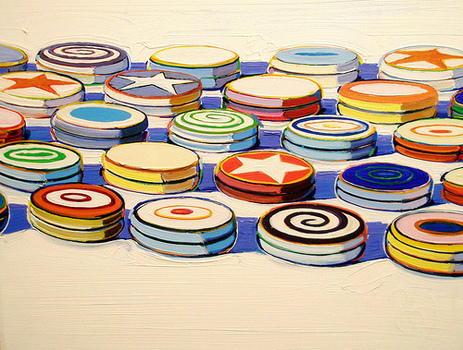
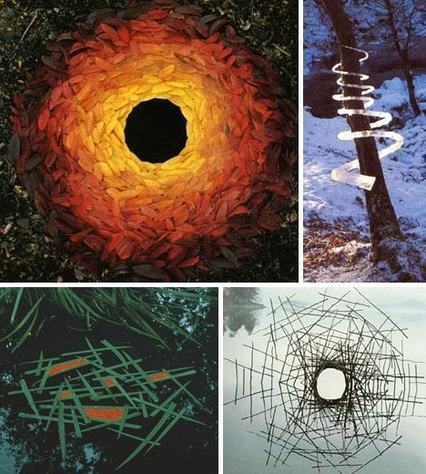
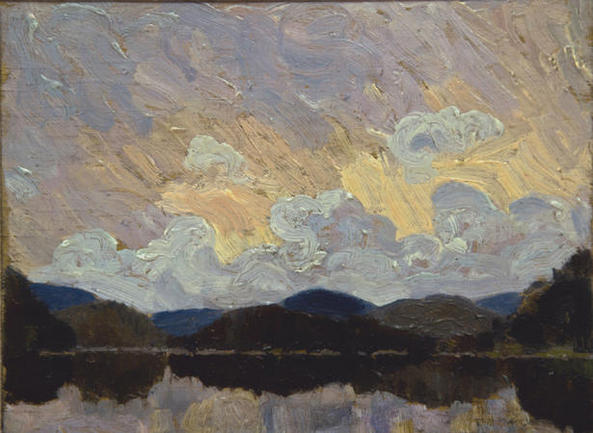
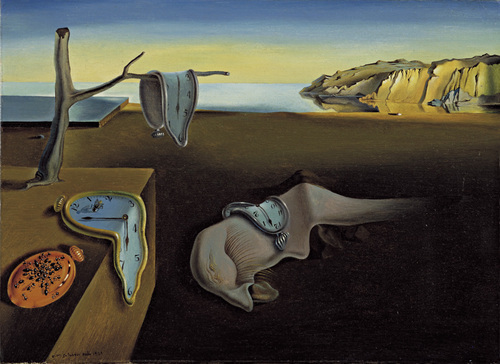
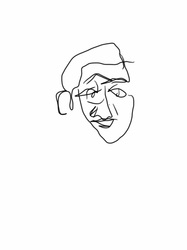
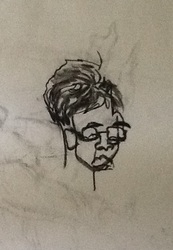
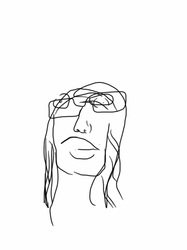
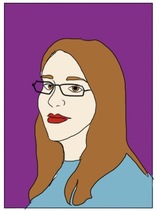
 RSS Feed
RSS Feed